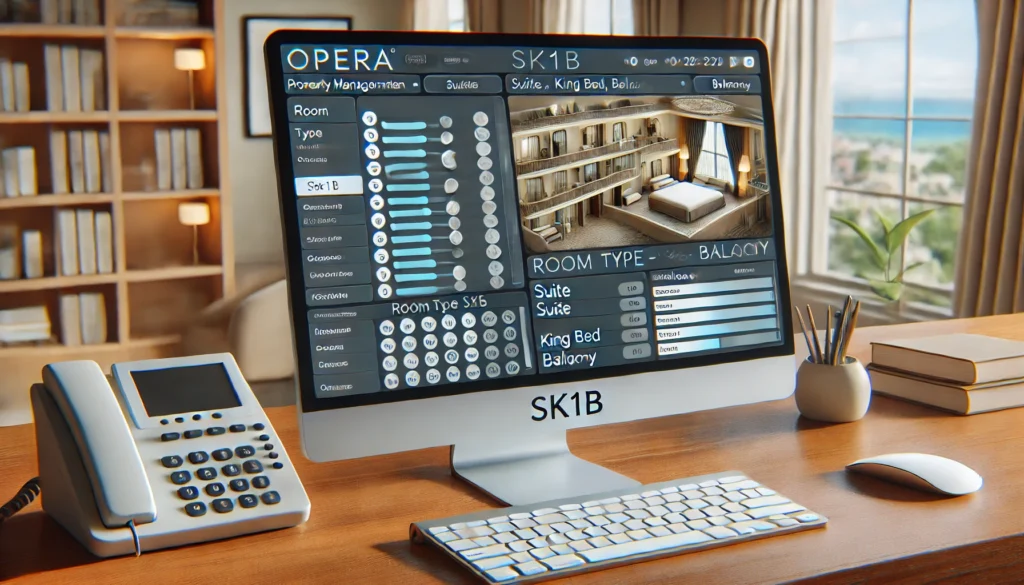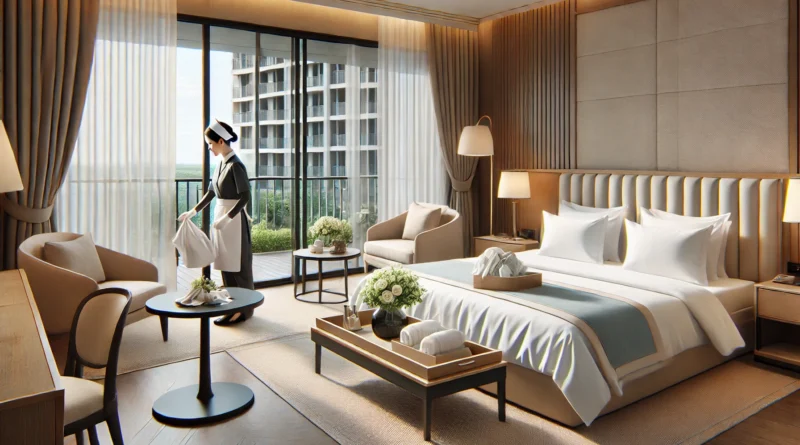Room Type SK1B Meaning in OPERA Software
Introduction
OPERA Property Management System (PMS) is an industry-standard tool that streamlines hotel operations and enhances guest experiences. One critical aspect of OPERA PMS is its room type coding system, which ensures that room categories are properly managed and accurately represented. Among these codes, “SK1B” often raises questions regarding its meaning and significance. In this guide, we delve into the details of room type SK1B in OPERA Software, decoding its components, practical uses, and the implications it has for hotel management.
What is OPERA Property Management System (PMS)?
OPERA PMS is a comprehensive software solution designed for the hospitality industry. It provides tools for reservation management, inventory control, and guest services, making it an essential resource for hotels, resorts, and other accommodations. A key feature of OPERA is the ability to configure and manage room types, which ensures seamless operations and an improved guest experience.
Key Features of OPERA PMS
- Reservation and Booking Management
- Inventory Control
- Revenue Management
- Reporting and Analytics
- Integration with other hospitality tools
Room type codes like SK1B are integral to these functionalities, helping properties organize their room inventory efficiently.
Understanding Room Type Codes in OPERA
Room type codes in OPERA are alphanumeric identifiers assigned to different room categories. They reflect attributes such as size, bed type, view, and amenities. Each hotel can customize these codes based on its unique room inventory and marketing strategy.
Common Examples of Room Type Codes
| Code | Meaning |
| DDB | Double Bed |
| SK1B | Suite, King Bed, Balcony |
| TT | Twin Bed, Terrace |
Room type codes like SK1B allow precise categorization, ensuring clarity for both staff and guests.
Decoding Room Type SK1B in OPERA Software
Breaking Down SK1B
The code “SK1B” can typically be interpreted as follows:
- S: Indicates “Suite” or a similar premium room category.
- K: Refers to “King Bed,” denoting the bed type.
- 1: Could signify the number of beds or a specific feature like a single layout.
- B: Represents “Balcony,” “Bathtub,” or a similar amenity.
Each component of SK1B is defined by the hotel’s configuration settings in OPERA, which allows flexibility in coding based on the property’s needs.
Practical Applications of SK1B
Room type SK1B has practical implications in various hotel operations:
- Reservation Management: Guests can select specific room types, ensuring their expectations align with the room’s features.
- Inventory Control: SK1B enables accurate tracking of premium suite availability.
- Guest Satisfaction: Offering clearly defined room types like SK1B enhances transparency and trust.
Configuring Room Types in OPERA
To ensure accuracy and efficiency, hotels must follow best practices when configuring room types in OPERA.
Steps for Configuring Room Types
- Identify Key Attributes: Define the features that differentiate room types (e.g., bed size, view, amenities).
- Create Meaningful Codes: Use intuitive and descriptive codes like SK1B.
- Test Configurations: Ensure the room type codes function correctly in the system.
Benefits of Proper Room Type Configuration
- Streamlined Operations: Simplifies booking and inventory processes.
- Enhanced Marketing: Highlight unique room features to attract guests.
- Revenue Optimization: Differentiate pricing for premium rooms like SK1B.
FAQs About Room Type SK1B in OPERA Software
- How can room type SK1B be displayed on a hotel’s booking website?
Room type SK1B can be displayed by integrating OPERA with the hotel’s booking engine. The description and features associated with SK1B (e.g., Suite with King Bed and Balcony) should be clearly listed in the online booking interface to attract guests and set accurate expectations. - Does room type SK1B impact room assignment during check-in?
Yes, room type SK1B can simplify the check-in process by allowing front desk staff to assign rooms based on predefined categories and guest preferences. The system ensures that rooms with specific features like those in SK1B are readily identifiable. - What happens if SK1B is overbooked?
In the case of overbooking, the OPERA system helps hotels reassign guests to equivalent or better room types. For example, a guest who booked SK1B might be upgraded to a higher-tier suite with similar or additional amenities. - Can room type SK1B be part of promotional offers?
Absolutely. Hotels can create special packages or promotional rates for SK1B to increase bookings. For instance, offering a discount on SK1B for honeymooners or including complimentary services can boost its appeal. - How does room type SK1B integrate with housekeeping operations?
SK1B’s configuration in OPERA allows housekeeping teams to identify the specific cleaning and preparation requirements for such rooms, ensuring that premium features like balconies or king-sized beds are properly maintained before guest arrival.
Conclusion
Understanding the meaning of room type SK1B in OPERA software is crucial for efficient hotel operations and guest satisfaction. By decoding its components and leveraging its features, hotels can optimize inventory, streamline bookings, and enhance the guest experience. This guide provides the foundation to configure, utilize, and benefit from room type codes like SK1B effectively, ensuring your property stays competitive in the dynamic hospitality market.
Recommended Articles:
- The Ultimate Guide to 5starsstocks.com 3d printing stocks
- Unlock Your Amazon Success with an Amazon Marketing Specialist By Hyperzon
- London Fog LFF22900-CRCE Cost: Full Pricing Guide, Features, and Best Deals
- Complete Guide to the 1980-1986 Ford F-150 Hydraulic Clutch Conversion Kit
- Everything You Need to Know About 801-515-5149: Identify, Protect, and Report

